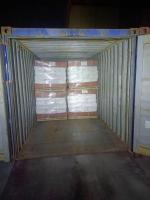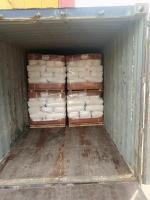Our Products
Polyacrylamide / anionic polyacrylamide of magnafloc 6260 can be replaced by Chinafloc A series

anionic polyacrylamide of magnafloc 6260 can be replaced by Chinafloc A series
anionic polyacrylamide of magnafloc 6260 is kind of anionic polyacrylamide with high anionic ,mainly used for kind of mineral processing,Chinafloc A series can replace of it with good result
Anionic polyacrylamide (APAM) is a type of water-soluble polymer that plays a critical role in various industrial applications due to its excellent flocculating, thickening, and clarifying properties. One of its most significant applications is in the field of mineral processing, where it is used extensively to enhance the efficiency and effectiveness of solid-liquid separation processes. This essay explores the primary application of anionic polyacrylamide in mineral processing, detailing its role in flocculation, sedimentation, dewatering, and filtration. By examining the mechanisms and benefits of using APAM, we can appreciate its importance in optimizing mineral processing operations.
Flocculation in Mineral Processing
Flocculation is a crucial process in mineral processing that involves the aggregation of fine particles into larger flocs, which can then be more easily separated from the liquid phase. Anionic polyacrylamide is widely used as a flocculant in this context due to its ability to neutralize the charges on mineral particles and promote their aggregation.
In mineral processing, the slurry generated during the extraction and processing of ores often contains a high concentration of fine particles that are difficult to settle. Anionic polyacrylamide, when added to the slurry, interacts with these particles through electrostatic attraction and bridging mechanisms. The negatively charged polymer chains of APAM bind to the positively charged sites on the mineral particles, reducing the repulsive forces between them and facilitating the formation of larger, more stable flocs.
These flocs can then be separated from the liquid phase more efficiently through sedimentation or filtration. The use of anionic polyacrylamide in flocculation improves the clarity of process water, enhances the recovery rates of valuable minerals, and reduces the volume of tailings that need to be managed.
Sedimentation and Clarification
Sedimentation is another vital process in mineral processing where anionic polyacrylamide plays a significant role. After flocculation, the flocs need to be settled out of the slurry to produce a clarified liquid phase. Anionic polyacrylamide enhances the sedimentation process by increasing the size and density of the flocs, which allows them to settle more rapidly.
In a typical mineral processing plant, thickening tanks or settling ponds are used to separate the solid and liquid phases. The addition of anionic polyacrylamide to the slurry promotes the rapid settling of flocs, resulting in a clear overflow of water and a concentrated underflow of solids. This process not only improves water clarity but also reduces the retention time required for sedimentation, thereby increasing the throughput of the processing plant.
Furthermore, the clarified water can be recycled back into the processing circuit, reducing the demand for fresh water and minimizing the environmental impact of the operation. The effectiveness of anionic polyacrylamide in enhancing sedimentation and clarification makes it an indispensable aid in mineral processing.
Dewatering and Filtration
Dewatering is a critical step in mineral processing where the moisture content of the solid material is reduced to facilitate handling, transportation, and further processing. Anionic polyacrylamide is commonly used in dewatering applications to improve the efficiency of solid-liquid separation.
During dewatering, the flocculated slurry is subjected to mechanical dewatering techniques such as centrifugation, filtration, or pressure filtration. Anionic polyacrylamide enhances the dewatering process by increasing the permeability of the filter cake, allowing water to pass through more easily while retaining the solid particles. This results in a drier filter cake with lower moisture content, which is essential for downstream processing steps such as drying, roasting, or smelting.
The use of anionic polyacrylamide in dewatering not only improves the efficiency of water removal but also reduces the energy consumption and operational costs associated with drying. Additionally, the improved dewatering performance reduces the volume of wet tailings, making their storage and management more feasible.
Filtration Optimization
Filtration is a common method for separating solids from liquids in mineral processing, and anionic polyacrylamide is widely used to optimize this process. Filtration involves passing the slurry through a filter medium, which retains the solid particles and allows the liquid to pass through. The efficiency of filtration is influenced by the size, shape, and permeability of the filter cake formed on the filter medium.
Anionic polyacrylamide improves filtration efficiency by promoting the formation of larger and more permeable flocs, which create a filter cake with higher porosity. This allows for faster filtration rates and reduces the likelihood of filter medium clogging. Additionally, the improved filter cake properties result in higher recovery rates of valuable minerals and reduced losses in the filtrate.
In pressure filtration systems, anionic polyacrylamide helps maintain consistent filtration rates and reduces the frequency of filter cleaning or replacement. This leads to increased operational efficiency and reduced maintenance costs. The use of anionic polyacrylamide in filtration optimization is essential for achieving high throughput and product quality in mineral processing.
Case Studies and Practical Applications
Several case studies and practical applications highlight the effectiveness of anionic polyacrylamide in mineral processing. For example, in the processing of copper ores, the use of anionic polyacrylamide has been shown to significantly improve the recovery of copper concentrates by enhancing the flocculation and sedimentation of fine particles. Similarly, in the beneficiation of iron ores, anionic polyacrylamide has been used to improve the dewatering and filtration of iron concentrate slurries, resulting in higher product yields and reduced moisture content.
In the treatment of coal slurries, anionic polyacrylamide has been used to promote the rapid settling of fine coal particles and improve the clarity of process water. This has led to more efficient coal recovery and reduced environmental impact. These case studies demonstrate the versatility and effectiveness of anionic polyacrylamide in various mineral processing applications.
Environmental and Economic Benefits
The use of anionic polyacrylamide in mineral processing offers several environmental and economic benefits. By improving the efficiency of solid-liquid separation processes, APAM helps reduce the consumption of fresh water and the generation of waste. This contributes to more sustainable mining practices and minimizes the environmental footprint of mineral processing operations.
From an economic perspective, the enhanced recovery rates, improved dewatering efficiency, and optimized filtration processes associated with anionic polyacrylamide use translate into higher productivity and lower operational costs. The reduced need for maintenance and the increased lifespan of filtration equipment further contribute to cost savings.





